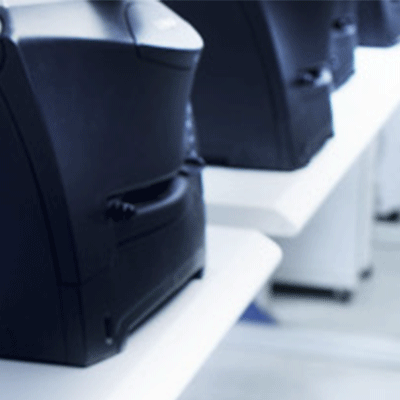 For years, consumers and corporations alike have sought ways to incorporate green practices into the way they live and do business. They use their individual and corporate purchasing power to identify and reward those manufacturers whose responsible and sustainable methods conserve natural resources, protect the environment and safeguard human health. So it should come as no surprise that electronics manufacturers are now being held to this same standard. To honor their personal or corporate environmental objectives, individuals and businesses are seeking out devices from manufacturers that have made a commitment to eliminate hazardous substances, increase the use of recycled materials and implement take-back programs.
For years, consumers and corporations alike have sought ways to incorporate green practices into the way they live and do business. They use their individual and corporate purchasing power to identify and reward those manufacturers whose responsible and sustainable methods conserve natural resources, protect the environment and safeguard human health. So it should come as no surprise that electronics manufacturers are now being held to this same standard. To honor their personal or corporate environmental objectives, individuals and businesses are seeking out devices from manufacturers that have made a commitment to eliminate hazardous substances, increase the use of recycled materials and implement take-back programs.
Manufacturers are responding to this demand for eco-friendly electronics by applying for the EPEAT (Electronic Product Environmental Assessment Tool) label, which, among other things, addresses the use of environmentally preferable materials, energy efficiency, design for recycling and end-of-life management. This registry becomes one more way for customers to compare products against a checklist of green design criteria and make a more informed purchasing decision.
But designing such a device requires collaboration, education and a shift away from a solely performance-based approach to one that considers the entire life cycle of the product.
The reality is that electronics are highly engineered devices that often rely on a combination of more than 40 different materials to deliver the durability, functionality and reliability that customers have come to expect from their gadgets. This presents product designers with a clear challenge: How to maximize sustainability and recyclability without compromising profitability and functionality?
The surest way to ensure a product meets the greatest number of EPEAT criteria for design for end-of-life and end-of-life management is to design that product with EPEAT in mind. Ignoring this phase of a product’s life cycle can mean the use of coatings that are incompatible with recycling, external enclosures that are difficult to remove, hazardous materials that are not readily identifiable or easily removed, or parts composed of multiple types of plastic.
Knowledge is Power
“The best way for product designers to gain a clear appreciation of why it is important to plan for easy disassembly and recyclability from the start is to talk to those experienced in doing just that: electronics recyclers,” said Steve Skurnac, President, Sims Recycling Solutions, Americas.
“An electronics manufacturer that understands commonly used recycling processes and technologies begins to grasp why glued components contaminate material streams, why specialized screw heads slow disassembly, and why difficult-to-extract batteries endanger worker health and safety.”
Discussions between designers and recyclers that take place early in the design process about the recyclability of materials that are being used or are being considered for use in a product can prove beneficial for both parties. The recycler gains information about materials that may require special handling or tools that may be necessary to aid tear down. The manufacturer learns about material or design adjustments that can yield more easily recycled and cleaner material streams, which can be used in the next generations of the device or in entirely different products.
This is knowledge that not only has the potential to boost the percentage of reusable and recyclable materials in a product, but also increases the likelihood that a product will meet more of EPEAT’s required criteria, resulting in an upgrade of its rating.
A Beneficial Partnership
For an electronics manufacturer committed to producing environmentally preferable products, reducing its environmental footprint and achieving the highest EPEAT rating possible, a good recycling partner can minimize the challenges associated with these efforts. To find a reliable and reputable recycler, assess the company’s technical expertise, evaluate its network of downstream vendors, and gauge its ability to provide customized services.
Technical know-how. Efficient separation of the complex mix of glass, metals and plastics found in electronics is the foundation of recycling. Seek out a recycler that relies on a number of processes—manual tear down and multistep mechanical shredding and separation—and technologies—infrared plastics separation and advanced metals separation to realize the greatest percentage of clean, recyclable material from a product.
Outside help. This very complexity means that downstream vendors, which further process the material streams—by refining, smelting or reformulating—and prepare it for reuse, are an important part of the recycling equation. A downstream vendor can have nearly as much influence on the success of a manufacturer’s recycling program—and ability to meet EPEAT standards—as the primary recycler, so it is essential to determine whether the recycler conducts regular audits to ensure its downstream vendors process and handle materials in a manner that is safe for employees and the environment.
Also, determine whether a suitable reporting mechanism to track actual recycling outcomes is in place to satisfy EPEAT reuse and recycling criteria.
Tailor made. Look for a recycler that through its infrastructure, capacity and strategically located facilities can offer additional services, such as providing and managing product take-back collection programs, diverting product packaging from landfills and simplifying transportation logistics. Through communication with recyclers, product designers and manufacturers come to understand why certain design and material choices and component configurations impede product recycling. Through collaboration with recyclers, designers and manufacturers can elevate design for recycling from an afterthought to a primary consideration at the beginning of a product’s life cycle. “By doing this, the next generation of electronics will not only exceed customer expectations, step more lightly on the environment, but be more easily and safely recyclable,” said Skurnac.
